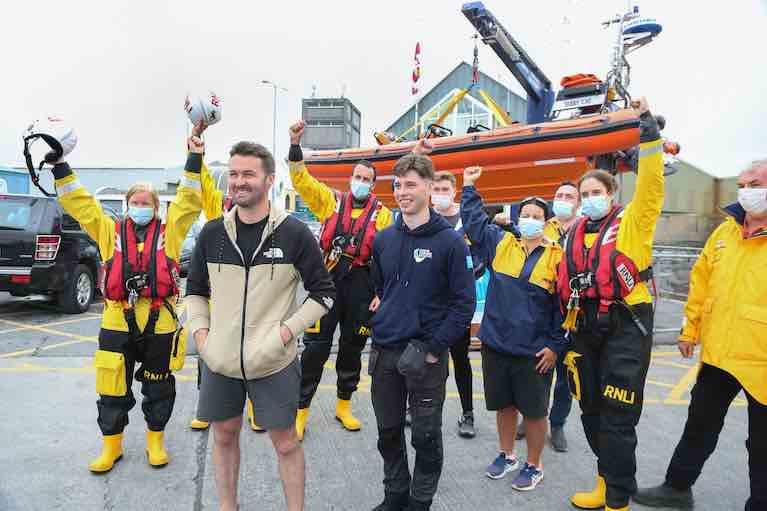Displaying items by tag: paddleborder
Galway Paddleboarders Pay Tribute to Enormous Rescue Effort - Former SAR Pilot Raises Questions About Search
Galway student Sara Feeney (23) has said she is “overwhelmed” with gratitude for the hundreds of people who searched overnight when she and her cousin Ellen Glynn (17) were swept out to the mouth of Galway Bay on paddleboards last week.
In a Sunday Times interview, Ms Feeney also pays tribute to her cousin, who was due to be released from University Hospital Galway this weekend.
“We didn’t even verbalise what might happen, or what we might both be thinking,” Ms Feeney, who was able to return home on the night of her rescue, says.
“I think if we had panicked at all, things could have been very different. I know if Ellen had panicked, I would have found it very difficult,” she says.
Ellen Glynn, who has also paid tribute to the rescue agencies, volunteers and Claddagh mariners Patrick Oliver and his son Morgan who found them tethered to crab pot floats, says that the sight of meteor showers and phosphorescence on the sea sustained them during the night.
They also sighted a small pod of dolphins off the Aran island of Inis Oírr the following morning.
Former Irish Coast Guard search and rescue pilot Dave Courtney, author of the memoir Nine Lives, says that questions need to be asked as to why the rescue took so long.
"sea-faring gut instinct"
“The whole country rejoiced when the two women were found alive after 15 hours at sea.,” Courtney said, paying tribute to the enormous rescue effort.
“ But tide and search probability computer technology, and three of the country’s four rescue helicopters - the most modern and best equipped in the world, armed with heat-seeking cameras - were no match for the sea-faring gut instinct of Patrick Oliver and his son Morgan,” he said.
The Olivers had noted the wind and “headed like a bloodhound straight to the survivors’ location”, Courtney said.
“The ocean is a cruel place....there was no loss of life in this incident, but that doesn’t mean there aren’t lessons to be learned,” he said.
“ The term ‘looking for a needle in a haystack’ is valid except that the FLIR / Forward-Looking Infra-Red camera on the Coast Guard helicopter can see the heat of human life relatively easily in sultry summer weather,” he said.
“Was it used effectively during the search? Were search assets duplicating each other’s efforts, instead of extending the search area as time and tidal drift and wind effect would have necessitated?” Courtney asked.
Irish Coast Guard
The Irish Coast Guard has said the search for the two women covered a 200 square mile sea area, and said it was using SAR MAP - the US software used effectively by Valentia Coast Guard in 2011 to track the probable location of the crew of the yacht Rambler which capsized in the Fastnet yacht race off West Cork.
The SAR MAP search area generated two scenarios which were used to co-ordinate all assets, including fishing vessels and commercial craft, it says.
It is understood that the helicopters and lifeboats were receiving frequent reports of “targets of interest”, which they had to divert to.
The Irish Coast Guard says that if the two women were not falling under the focused spectrum of the Sikorsky S-92 night sun or FLIR camera they would be “difficult to spot”, particularly as they had no wetsuits to provide an extra heat source.
“ The search was just moving into the south-west of the Inis Oirr sector ...with both aviation and surface assets when the fishing vessel Johnny Ó came upon them. It is highly likely they would have been detected within the following one to two hours as it was daylight,” it says.
More on The Sunday Times here
























































